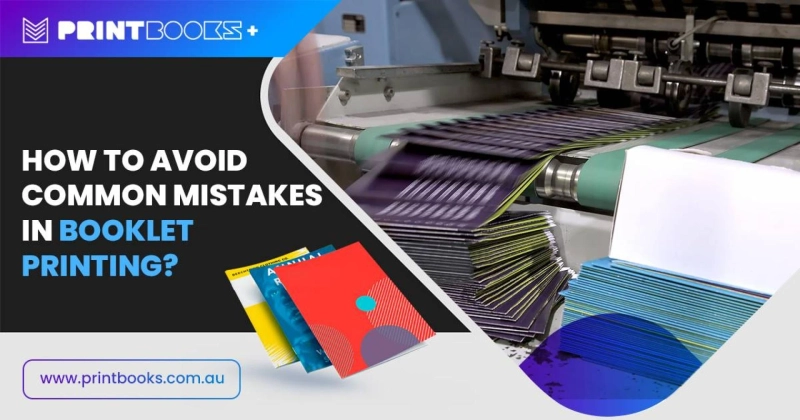In the digital age, where information is at our fingertips, the allure of a well-designed and professionally printed booklet remains unmatched. Whether for marketing, informational purposes, or artistic endeavors, booklets are a powerful means of communication. However, the success of a booklet lies not just in its content but also in the printing process. In this blog, we'll delve into essential tips to help you sidestep common mistakes and ensure a seamless and visually striking booklet printing experience.
1. Begin with a Clear Purpose:
Before delving into the design and printing process, define the purpose of your booklet. Is it a marketing brochure, an informational guide, or perhaps a portfolio? Understanding your booklet's primary objective will guide design choices and ensure that the printed outcome serves its intended purpose effectively.
2. Mindful Design for Print:
Designing for print is not the same as designing for the screen. Consider factors like bleed, trim, and margins in your design to prevent content from being cut off during printing. Use high-resolution images to maintain clarity, and choose a color profile suitable for print to ensure accurate color reproduction.
3. Optimal Page Count:
While it might be tempting to include as much information as possible, consider the optimal page count for your booklet. A well-structured booklet with concise content is more likely to engage readers. Carefully plan the layout to balance text and visuals, ensuring a harmonious and reader-friendly design.
4. Choose the Right Paper Stock:
The choice of paper can significantly impact the overall look and feel of your booklet. Consider the content, purpose, and budget when selecting paper stock. Glossy paper may enhance vibrant images, while matte paper provides a sophisticated feel. Take the time to explore different options and choose a stock that aligns with your booklet's purpose.
5. Mind the Binding:
The binding method is a crucial aspect of booklet printing. Consider the number of pages in your booklet and choose a binding method that complements its structure. Options include saddle-stitching for thinner booklets, perfect binding for a more polished finish, or spiral binding for added flexibility. Selecting the right binding method ensures durability and enhances the overall aesthetic.
6. Proofread Rigorously:
Typos and grammatical errors can detract from the professionalism of your booklet. Before sending it to the printer, proofread the content rigorously. Enlist the help of others to catch errors you might have missed. A polished and error-free booklet reflects attention to detail and enhances its credibility.
7. CMYK Color Mode:
Ensure that your design is in CMYK color mode rather than RGB. Printers use the CMYK color model, and using RGB might result in color discrepancies. Convert your design to CMYK during the design phase to guarantee that the printed colors match your expectations.
8. Consider the Folding Pattern:
If your booklet involves folds, carefully plan the folding pattern. Common folding options include bi-fold, tri-fold, and gatefold. Each has its own visual impact and serves different purposes. The folding pattern should complement the content and enhance the overall reading experience.
9. Maintain Consistent Branding:
If the booklet is a part of your branding strategy, maintain consistency with your brand guidelines. Use your brand colors, fonts, and logo consistently throughout the booklet. Consistent branding reinforces your identity and fosters a cohesive and professional look.
10. Invest in Professional Printing Services:
While home printers are suitable for some tasks, professional booklet printing requires specialized equipment and expertise. Invest in a reputable printing service that offers high-quality prints, a variety of paper options, and customization features. Professional printing ensures that your booklet is produced to the highest standards.
11. Add a Call to Action:
If your booklet serves a marketing purpose, don't forget to include a clear and compelling call to action. Whether it's encouraging readers to visit your website, contact you for more information, or make a purchase, a well-crafted call to action guides readers on the next steps.
12. Double-Check Printing Specifications:
Before sending your booklet for printing, double-check the printer's specifications. Ensure that your document is set up with the correct dimensions, bleed, and resolution. Following the printer's guidelines reduces the risk of errors during the printing process.
In conclusion, mastering the art of booklet printing involves a strategic approach from conception to execution. By avoiding common mistakes and following these tips, you can ensure that your booklet not only communicates effectively but also leaves a lasting impression on your audience. Whether it's a marketing tool, informational guide, or creative project, a well-printed booklet has the power to captivate and engage.


